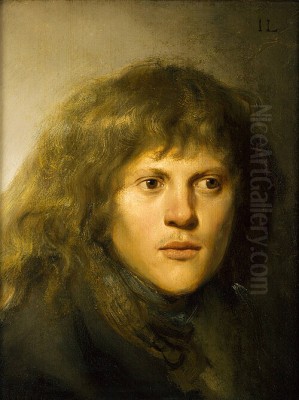
The Dutch Golden Age, spanning roughly the 17th century, was a period of extraordinary artistic flourishing in the Netherlands. Amidst a constellation of brilliant painters, two young men from Leiden stood out for their prodigious talent and intense, albeit complex, relationship: Rembrandt van Rijn and Jan Lievens. While Rembrandt's name has echoed through centuries as the quintessential Dutch Master, Jan Lievens, his contemporary, collaborator, and rival, possessed a comparable genius, a remarkable versatility, and forged a distinct artistic path that is increasingly recognized for its own brilliance and significance. This exploration delves into the life, art, and legacy of Jan Lievens, a painter whose journey through the vibrant art scenes of Leiden, Amsterdam, Antwerp, and beyond, reveals a master navigating influences, forging innovations, and leaving behind a body of work that continues to captivate and impress.
Early Life and Prodigious Beginnings
Jan Lievens was born on October 24, 1607, in Leiden, a prominent university city and center of textile production in the Dutch Republic. His father, Lieven Hendricxsz., was an embroiderer, working with luxurious fabrics and intricate designs, an environment that perhaps subtly influenced his son's later appreciation for texture and detail. From a remarkably young age, Jan displayed an exceptional aptitude for drawing and painting. Recognizing this innate talent, his parents arranged for him to begin formal artistic training at the tender age of eight.
His first master was Joris van Schooten, a respectable Leiden painter known for his portraits and historical scenes. Under Van Schooten, the young Lievens would have learned the fundamentals of drawing, grinding pigments, and preparing panels. However, his ambition and rapidly developing skills soon necessitated more advanced instruction. Around the age of ten or twelve, a remarkably young age even for the time, Lievens was sent to Amsterdam to study with the most sought-after teacher of history painting in the Netherlands: Pieter Lastman.
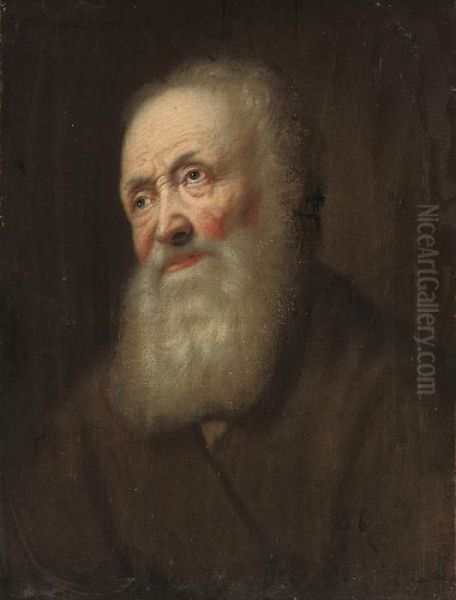
Lastman's studio was a crucible of artistic development. He had traveled to Italy and absorbed the lessons of Italian Renaissance and Baroque art, particularly the dramatic narratives and vibrant colors of artists like Adam Elsheimer and, indirectly, Caravaggio. Lastman specialized in complex biblical and mythological scenes, emphasizing clear storytelling, expressive figures, and rich detail. Crucially, Lastman was also the teacher of Rembrandt van Rijn, who studied with him a few years after Lievens. This shared tutelage under Lastman provided both young artists with a solid foundation in history painting, the most highly regarded genre of the time, and exposed them to the dramatic potential of light and shadow.
The Leiden Years: A Partnership Forged in Genius
By about 1619 or 1620, still only a teenager, Jan Lievens returned to Leiden and established himself as an independent master. His technical facility was already astonishing, attracting attention for its maturity and power. Around 1625, Rembrandt also returned to Leiden after his studies with Lastman, setting up his own studio. For a period of roughly five to six years, from about 1626 to 1631, these two exceptionally gifted young artists worked in close proximity, possibly even sharing a studio or collaborating directly. This period was one of intense creative dialogue, mutual influence, and undoubtedly, burgeoning rivalry.
They tackled similar subjects, often large-scale history paintings and expressive character studies known as 'tronies'. They explored dramatic lighting effects inspired by the Utrecht Caravaggisti – painters like Gerrit van Honthorst and Hendrick ter Brugghen who had brought Caravaggio's stark chiaroscuro back from Italy. Both Lievens and Rembrandt experimented with thick impasto, using the texture of the paint itself to enhance the emotional impact and physical presence of their subjects. They likely shared models, and anecdotes suggest they even posed for each other; some scholars propose Lievens appears in early works by Rembrandt, and vice versa, such as potentially modeling for figures in Rembrandt's allegorical painting of Hearing.
Constantijn Huygens, the influential secretary to the Stadtholder Frederik Hendrik, visited the young artists in Leiden around 1629 and wrote famously about their immense talents. He praised both, noting Lievens's preference for grand subjects and bold conceptions, and Rembrandt's strength in capturing intimate emotion and character. Huygens saw them as equals, destined for greatness, though he subtly favored Lievens's grandeur at that early stage. Huygens became an important early patron, purchasing works from Lievens and even facilitating the gift of a Lievens painting to King Charles I of England, signaling Lievens's burgeoning international reputation even in his early twenties.
Early Masterworks and Developing Style
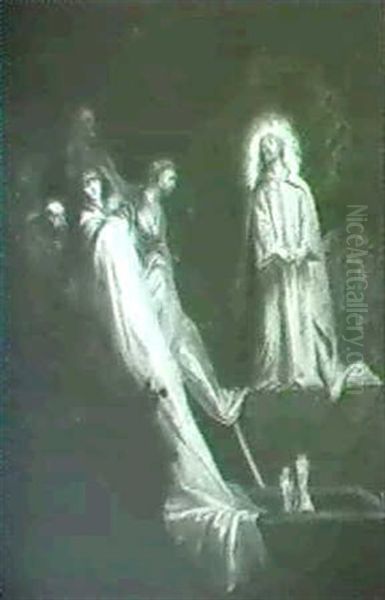
The works produced by Lievens during his Leiden period are characterized by their ambition, dramatic intensity, and technical bravura. He often worked on a larger scale than Rembrandt during these years. Paintings like Job in His Misery (National Gallery of Canada) showcase his ability to convey profound suffering through powerful composition, expressive figures, and the stark play of light and shadow, clearly indebted to the Caravaggist tradition. His tronies, such as the compelling Head of an Old Man or studies of youths, demonstrate a fascination with capturing individual character and emotion, often using rough, visible brushwork to enhance the sense of immediacy.
His Self-Portrait from around 1628-29 (versions exist, including one in the National Gallery of Art, Washington D.C.) presents a confident, almost defiant young artist. He meets the viewer's gaze directly, his youthful features framed by unruly hair, rendered with a combination of fine detail and bold brushstrokes. It speaks volumes about his self-assurance and artistic ambition at such a young age. These Leiden works established Lievens as a major force, an artist whose technical skill and dramatic vision rivaled, and in some contemporary eyes even surpassed, that of his friend Rembrandt.
Broadening Horizons: Antwerp and Flemish Influences
Around 1631 or 1632, the close artistic partnership in Leiden came to an end. Rembrandt moved to Amsterdam, seeking greater commercial opportunities in the bustling metropolis. Lievens, perhaps seeking different artistic stimuli or patronage, embarked on a different path. An earlier plan, mentioned in anecdotes from 1627, to travel to London had apparently failed due to lack of suitable introductions. Instead, Lievens likely spent time in England later, possibly between 1632 and 1635, where he may have encountered the work of Anthony van Dyck. Following this, or perhaps preceding it, he moved to Antwerp, the artistic capital of the Southern Netherlands (Flanders).
Antwerp was the city of Peter Paul Rubens, the towering figure of Northern European Baroque painting. It was also home to Anthony van Dyck (before his definitive move to London) and Jacob Jordaens, masters of a more flamboyant, colorful, and elegant style than was typical in the Dutch Republic. Lievens's time in Antwerp, likely lasting until around 1638-39, marked a significant shift in his style. He absorbed the lessons of the Flemish masters, moving away from the starker chiaroscuro and rougher textures of his Leiden period.
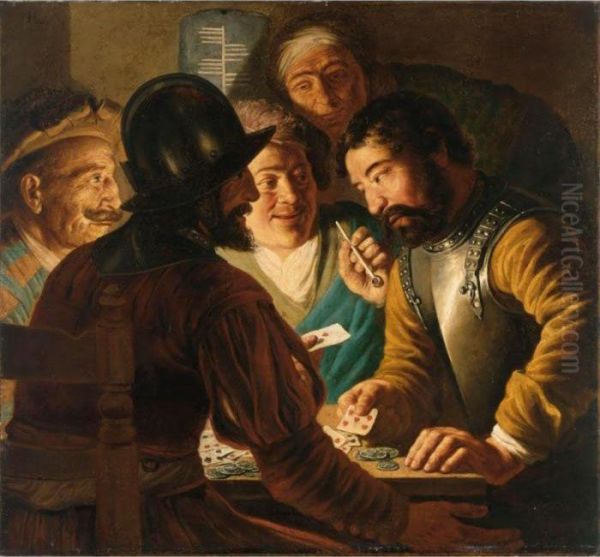
His palette became lighter and more varied, his brushwork smoother and more refined, and his compositions often gained a greater sense of elegance and movement. This is particularly evident in his portraiture, which began to emulate the sophisticated style favored by Van Dyck, catering to an aristocratic clientele. He also developed his skills in landscape painting during this period, influenced by Flemish traditions but bringing his own dramatic sensibility to woodland scenes. His association with the genre painter Adriaen Brouwer, another artist who moved between the Northern and Southern Netherlands, may also date from this period, though their styles remained distinct.
Amsterdam: Maturity, Commissions, and Shifting Styles
After his time abroad, Lievens returned to the Dutch Republic, briefly working in Leiden and The Hague before finally settling in Amsterdam in 1644. By this time, Amsterdam was the undisputed center of the Dutch art world, and Rembrandt was its most famous resident artist. Lievens, however, quickly established himself as a leading figure in his own right, securing numerous prestigious commissions. He became highly sought after as a portrait painter by the city's wealthy elite, his more polished, internationally inflected style appealing to patrons seeking elegance and status.
His success extended to large-scale public projects. He received commissions to create history paintings for the new Amsterdam Town Hall (now the Royal Palace on Dam Square), a hugely prestigious project that involved the leading artists of the day, including Rembrandt's former pupils Govert Flinck and Ferdinand Bol, as well as the Flemish master Jacob Jordaens. Lievens's contributions demonstrated his ability to work on a monumental scale and adapt his style to grand decorative schemes.
During his Amsterdam years, Lievens's style continued to evolve. While capable of powerful history paintings, his work generally adopted the smoother finish and lighter tonalities associated with the international Baroque style, moving further away from the dramatic intensity of his early Leiden works and the path Rembrandt was taking towards deeper introspection and looser brushwork. This shift likely reflected both his experiences in Antwerp and London and the prevailing tastes of his Amsterdam clientele. He married twice during his career; his first marriage in 1638 (not 1633 as sometimes stated) was to Susanna de Nole (daughter of the Antwerp sculptor Andries Colyns de Nole, not Cornelis de Nolles), which may have provided some financial stability. After her death, he married Cornelia de Beynne in 1648.
A Master of Diverse Genres
Jan Lievens's versatility remained a hallmark throughout his career. He excelled across multiple genres, demonstrating a remarkable adaptability and breadth of skill.
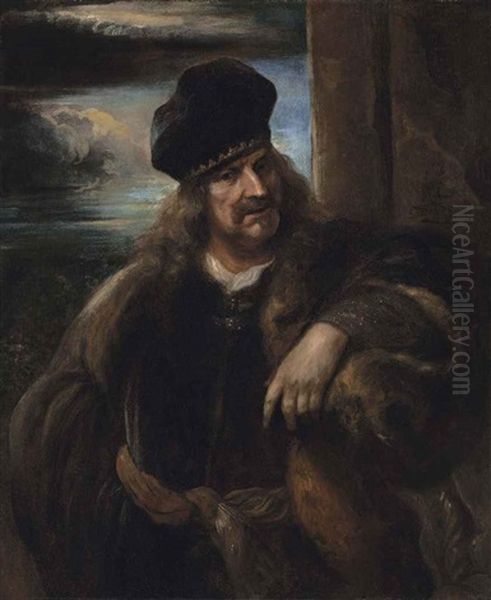
Portraits: Lievens was a highly accomplished portraitist. His works range from formal commissioned portraits of wealthy merchants and dignitaries, often rendered with the elegant flair absorbed from Van Dyck, to more intimate and psychologically penetrating character studies, or 'tronies'. Works like Boy in a Cape and Turban (Portrait of Prince Rupert of the Palatinate?) from The Leiden Collection exemplify his ability to capture youthful sensitivity and exotic costume with refined brushwork and subtle lighting. His tronies of old men and women continue the tradition he explored in Leiden, focusing on expressive faces and textures.
History Painting: Grounded in his training with Lastman, Lievens continued to produce biblical, mythological, and allegorical scenes throughout his life. His early The Raising of Lazarus (c. 1630-31, Brighton Museum & Art Gallery) is a powerful example of his Leiden style, with its dramatic composition centered on the illuminated figure of Lazarus, contrasting sharply with the surrounding darkness and astonished onlookers. Later history paintings often adopted the more fluid compositions and brighter colors of his mature style.
Landscape Painting: Lievens made significant contributions to Dutch landscape painting. Moving beyond the typically Dutch panoramic views, he often focused on intimate woodland scenes, characterized by gnarled trees, dense foliage, and dramatic effects of light filtering through the leaves. Works like Forest Landscape with a Pond (Harvard Art Museums) show his sensitivity to nature and his ability to create atmospheric, almost romantic, depictions of the forest interior, drawing on Flemish precedents but imbued with his own unique vision.
Printmaking: Like Rembrandt, Lievens was also a gifted printmaker, proficient in etching and even experimenting with the technically demanding medium of chiaroscuro woodcut. His prints often explore similar themes to his paintings, including tronies, biblical scenes, and landscapes, showcasing his graphic skill and inventive approach to line and tone.
Anecdotes, Reputation, and Financial Woes
Anecdotes surrounding Lievens often highlight his relationship with Rembrandt. The stories of them serving as models for each other, whether entirely accurate or embellished, underscore their close early connection. The claim that Lievens modeled for a figure in Rembrandt's The Night Watch is less substantiated but persists in popular accounts. His encounter with Constantijn Huygens and the subsequent royal patronage in England attest to his early fame. He enjoyed considerable renown during his lifetime, receiving commissions not only in the Netherlands but also potentially working for patrons in Berlin and Kleve later in his career.
Despite his artistic success and numerous commissions, Lievens seems to have struggled with financial management throughout his life. Unlike Rembrandt, whose financial ruin is well-documented and linked partly to his art collecting and house purchase, the specific reasons for Lievens's difficulties are less clear but appear persistent. He faced financial troubles later in life, and when he died in Amsterdam on June 4, 1674 (buried June 8), at the age of 66, he was reportedly insolvent, leaving his family with debts. This stands in stark contrast to the high regard in which his art was held by many patrons.
The Long Shadow of Rembrandt and Modern Rediscovery
For centuries after his death, Jan Lievens's reputation languished in the immense shadow cast by Rembrandt. Their early stylistic similarities, particularly during the Leiden period, led to frequent confusion and misattribution. Many works by Lievens were incorrectly assigned to Rembrandt, considered the greater genius, which ironically obscured Lievens's own significant contributions and artistic identity. Art historians and connoisseurs often viewed Lievens as merely an imitator or a lesser follower of Rembrandt, failing to recognize the distinct trajectory of his career and the unique qualities of his art, especially after he left Leiden.
The tide began to turn in the 20th century, accelerating significantly in recent decades. Through careful scholarship, connoisseurship, and technical analysis, art historians have worked diligently to disentangle the oeuvres of the two artists. This process has involved reattributing numerous paintings, drawings, and prints to Lievens, allowing his artistic personality to emerge more clearly. Major monographic exhibitions, such as the landmark show "Jan Lievens: A Dutch Master Rediscovered," organized by the National Gallery of Art, Washington D.C., the Milwaukee Art Museum, and the Rembrandthuis Museum, Amsterdam (2008-2009), have been crucial in re-evaluating his work and presenting his achievements to a wider audience. These efforts have firmly re-established Lievens not as a mere satellite of Rembrandt, but as a major master in his own right, an artist of exceptional talent, versatility, and historical importance.
Contemporaries and Artistic Context
Lievens's career intersected with many key figures of the Dutch and Flemish art worlds. His primary artistic dialogue was, of course, with Rembrandt van Rijn. His training under Pieter Lastman connected him to a lineage of history painting. His early work shows the clear impact of the Utrecht Caravaggisti, such as Gerrit van Honthorst and Hendrick ter Brugghen. His time in Antwerp brought him into the orbit of Peter Paul Rubens and Anthony van Dyck, whose influence profoundly reshaped his style. He associated with Adriaen Brouwer, known for his peasant scenes. In Amsterdam, he worked alongside artists like Govert Flinck, Ferdinand Bol, and Jacob Jordaens on the Town Hall project. His first master was Joris van Schooten. While perhaps less directly influential on his style, he worked in Leiden during the rise of the 'fijnschilders' (fine painters) like Gerard Dou (Rembrandt's first pupil) and later Frans van Mieris, representing a very different aesthetic focus. His patrons included figures like Constantijn Huygens and potentially King Charles I of England. This network highlights Lievens's position within the rich tapestry of 17th-century art.
Legacy in Collections Worldwide
Today, the works of Jan Lievens are held in major museums and prestigious private collections across the globe, a testament to his rediscovered status. Significant holdings can be found at:
The Rijksmuseum, Amsterdam
The Rembrandthuis Museum, Amsterdam
The National Gallery of Art, Washington D.C.
The Leiden Collection, New York
The National Gallery, London
The J. Paul Getty Museum, Los Angeles
The Milwaukee Art Museum
The Herzog Anton Ulrich-Museum, Braunschweig (holding works like Abraham's Sacrifice)
The Louvre Museum, Paris
Harvard Art Museums, Cambridge, MA
National Gallery of Canada, Ottawa
Brighton Museum & Art Gallery, UK
His works have also been featured in exhibitions at institutions like the National Museum of China in Beijing and the Musée des Beaux-Arts in Montreal. The presence of his art in these diverse institutions allows audiences worldwide to appreciate the skill, drama, and versatility of this once-overshadowed Dutch Master. Former galleries like the Alfred Brod Gallery in London also played a role in exhibiting his work during the period of his critical reappraisal.
Conclusion: A Master Reclaimed
Jan Lievens stands as a compelling figure in the narrative of the Dutch Golden Age. A child prodigy whose early brilliance rivaled Rembrandt's, he forged a unique artistic path marked by stylistic evolution and remarkable versatility. From the dramatic intensity of his Leiden years, shaped by Caravaggism and his dialogue with Rembrandt, he moved towards the elegant, international Baroque style influenced by Flemish masters like Rubens and Van Dyck. He excelled as a painter of portraits, history scenes, landscapes, and tronies, and was also a gifted printmaker.
Though long obscured by the fame of his Leiden contemporary, Jan Lievens has been rightfully reclaimed by art history. No longer seen as a mere follower, he is recognized as an independent master whose technical prowess, innovative compositions, and ability to adapt and absorb diverse influences place him firmly in the front rank of 17th-century European artists. His works, now proudly displayed in museums around the world, offer a window into the richness and complexity of the Dutch Golden Age and the enduring power of a truly original artistic vision.